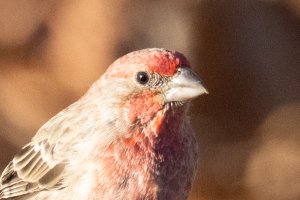Getting back to this thread as I have been comparing my EF 100-400 II w/1.4TC vs a loaner RF 100-500 and the RF 200-800. This post is the 100-400 II vs the RF 100-500.
Previously, I knew the RF 100-500 was a bit better than the EF 100-400 II. Looking at the charts on TDP, I really did wonder how much better it was, specifically this
comparison of 500 mm vs 560 mm. Already owning the 100-400 II, holding onto it was a bit of a no brainer...or so I thought.
But, listening and reading here, also having a friend that recently upgraded and singing the praises of the RF 100-500L, I decided to get a loaner form CPS.
While I wasn't able to line up species, I think the difference is obvious enough.
All taken on my R5, all of birds at the same branch at my feeder, within 15 min of each other. I measured today to confirm, the branch is 27 ft away from the window I shoot from.
EF 100-400 II w/EF1.4TC. @560 mm, 1/1250, f/10, ISO 4000 (from auto ISO, interestingly, the other lenses were ISO 3200 for the same scene...T-stop vs F-stop?)
Other than cropping, and unedited headshot of this finch:

IMO, ugly. There is detail there....ISO4000 is taking it's toll, but this is why I historically have used my EF500 II wTC at my bird feeder. I wish I could say this is a one off, but I had three different recent sittings with the 100-400 II /TC and this is pretty typical. Sure, I could have helped noise by going to f/8...that only helps so much.
Trying to clean up the image with DeNoise in LR and, I think bird tongue is funny:

So, you can get a good images. It is a great lens. But I find it interesting that 27 ft/8 m pushes it's abilities.
What a processed/full bird image might look like:

Look...for a lot of instances and a lot of people, not bad. I have walked parks/kayaked/traveled with this combination. But, I jumped on the RF 200-800 for a reason.
RF 100-500L @ 500 mm (1/1250, f/10, ISO3200)
Unprocessed headshot of a Junco...

IMO, unprocessed is still very nice, but the images clean up very well.
Processed headshot:

Processed full-body:

IMO...that's pretty.
RF 100-500 w/RF1.4TC (700 mm, 1/1250, f/10, ISO 3200)
unprocessed headshot:

Not even that above needs much work, so I'll switch birds. Processed headshot:

Processed full-body (I am loving the different hues coming out):

I do also want to note that the hit rate, while I did not calculate, was noticeably worse with the EF 100-400 II wTC. The RF 100-500 with and w/o the TC was fast and more consistent.
Overall, call me impressed by the RF 100-500L. Great lens. It definitely annoys me how you cannot fully zoom out with the TC in place, but optically, those images are up there with my EF 500 II w/TC which is one of my favorite lenses of all time.
The day after these photos were taken, I tried to compare the RF 100-500 w/TC and the RF 200-800 with and without TC. Hopefully I post that tomorrow.









